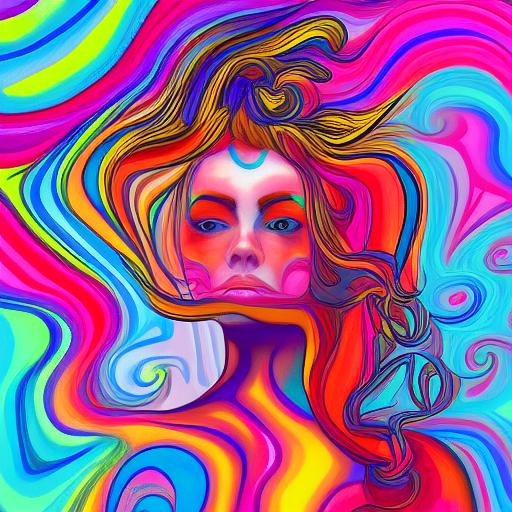Psychedelia painting
Psychedelia painting is a style of art that emerged in the 1960s and is characterized by its use of bright colors, bold shapes, and surreal imagery. Here are some things related to psychedelia painting.
Use of vibrant colors
Psychedelic art is known for its use of bold and bright colors, often in combinations that are unexpected or surreal. These colors can create a sense of energy and excitement, and can help to convey the psychedelic experience.
Features of psychedelic art
Psychedelic art often features surreal or dreamlike imagery, with abstract shapes, patterns, and forms that are not found in the natural world. These images can be symbolic or representational, and are often used to convey a sense of transcendence or altered states of consciousness.
Influential artists
Some of the most influential artists associated with psychedelic art include Wes Wilson, Victor Moscoso, Rick Griffin, and Stanley Mouse. These artists helped to define the visual language of the psychedelic era, and their work continues to influence contemporary artists today. Psychedelic art is not limited to painting alone. It can also be found in other forms of media such as posters, album covers, and animation.
What is AI-generated art?
AI-generated art refers to artwork created using artificial intelligence algorithms. The benefits of this type of art include its ability to quickly and efficiently produce images, as well as its ability to experiment with different styles and techniques. This is particularly useful for designers who want to create customized and distinctive designs that meet specific requirements. Moreover, AI-generated art can promote inclusivity by providing opportunities for artists from diverse backgrounds to create artwork that reflects their unique experiences and perspectives. By using tools such as Visual Paradigm Online, designers can seamlessly integrate AI-generated art into their designs, further streamlining the creative process.
How can I write this prompt?
Firstly, let’s break down the individual components of the prompt and how they influence the image being generated.
“Psychedelic painting of a woman” – This part of the prompt sets the overall theme and subject matter of the image. It tells the AI that the image should be a painting featuring a woman, and that the style should be psychedelic.
“A digital rendering by Caroline Chariot-Dayez” – This part of the prompt references a specific artist, indicating that the AI should use this artist’s style as inspiration for the image. It also implies that the image should be a digital rendering, rather than a traditional painting.
“Trending on Pexels” – This part of the prompt suggests that the image should be popular or in-demand, and that it is likely to be used in a commercial or marketing context.
“Psychedelic flowing hair” – This part of the prompt provides a specific detail that should be included in the image – in this case, the woman’s hair should be flowing and psychedelic in nature.
“Psychedelic goddess” – This part of the prompt suggests that the woman in the image should be depicted as a goddess or other divine figure, with a psychedelic or mystical quality.
“Wearing psychedelic wicca” – Finally, this part of the prompt provides a specific detail about the woman’s clothing or accessories. In this case, she should be wearing something that is both psychedelic and associated with the Wiccan religion.
To write a similar prompt, you should consider the theme or subject matter of the image, any specific artists or styles you would like to reference, and any specific details you would like to include in the image. It is also helpful to include keywords or phrases that are relevant to the desired style or theme, such as “psychedelic” or “flowing hair.” By providing specific guidance to the AI, you can help to ensure that the generated image meets your specific requirements and captures the desired aesthetic.


